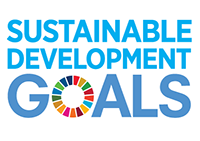Violent Crimes
Definition:
Violent crimes rate per 100,000 population
Methods and Limitations:
Violent crime data is calculated using the incident-based crime statistics code for ‘Total violent Criminal Code violations [100]’.
The violent crime category has been expanded under the Incident-based Uniform Crime Reporting Survey (UCR2) to include a number of offences not previously included in the violent crime category, including uttering threats, criminal harassment and forcible confinement. Therefore, total violent crime counts in this table will not match total violent crime counts from the Aggregate Uniform Crime Reporting Survey (URC).
During the production of each year’s crime statistics, data from the previous year are revised to reflect any updates or changes that have been received from the police services.
Police reported statistics may be affected by differences in the way police services deal with minor offences. In some instances, police or municipalities might chose to deal with some minor offences using municipal by-laws or provincial provisions rather than Criminal Code provisions. Counts are based on the most serious violation in the incident.
The methodology for calculating census metropolitan area (CMA) populations was modified in 2003. Starting in 1996, the populations for CMAs have been adjusted to reflect the actual policing boundaries within the CMA and do not reflect the official Statistics Canada population for these CMAs.
For the period from 1998 to 2017 Incident-based Uniform Crime Reporting Survey (UCR2) data are not available for all respondents. In order to report this level of detail for police services still reporting to the Aggregate Uniform Crime Reporting Survey (UCR) over this time, a process of imputation was applied to derive counts for violations that do not exist on their own in the aggregate survey. For approximately 80% of the aggregate offence codes, there is a 1:1 mapping with a new incident-based violation code. For violations where this was not the case, such as the aggregate other Criminal Code category, it was necessary to estimate (impute) this figure using the distribution of other Criminal Code offences from existing Incident-based UCR2 respondents.
In January 2018, the Uniform Crime Reporting Survey (UCR) definitions of “founded” and “unfounded” criminal incidents were updated to reflect a more victim-centred approach for recording crimes that consider the complexities of certain offences such as sexual assault, family violence and intimate partner violence. Under the new reporting standards, specific offences may be more likely reported by police as founded rather than unfounded (or unsubstantiated), which would exclude them from police-reported crime rates and crime severity indices. Data for 2019 represent the first complete year of UCR data collected under the new reporting standards. As a result, for selected violations and police services, the actual proportion of incidents in 2019 that were classified as “not cleared” has increased. Use caution when comparing these data with prior years.
Rate Per 100,000 Population: Population figures reflect only the permanent or resident population of a jurisdiction. Where a jurisdiction serves as the centre for commercial businesses, human or public services, or entertainment, it may have substantial “part-time” populations, e.g., tourists, cabin owners, commuters, students, and seasonal staff. These temporary populations, whose permanent residence is within another jurisdiction, are excluded from a jurisdiction’s population figures. This may be a factor to consider when examining the crime rate and Crime Severity Index for some municipalities.
Data collected for this indicator is released for Census Metropolitan Areas (CMAs), as well as ‘Police Areas’. Police areas refer to either municipal police, Rural Canadian Mounted Police (RCMP) rural and municipal detachment boundaries as well as Ontario Provincial Police (OPP) Rural and Municipal detachment boundaries. Areas with municipal police services, which is police services provided by the municipality, are identified by the city name followed by ‘municipal’(e.g. Victoria, Municipal).
Sources:
Canada, Provinces, and CMAs: Statistics Canada. Table 35-10-0177-01 (formerly CANSIM 252-0051) Incident-based crime statistics, by detailed violations.
Atlantic Provinces: Statistics Canada. Table 35-10-0178-01 (formerly CANSIM 252-0075) Incident-based crime statistics, by detailed violations, police services in the Atlantic Provinces.
British Columbia: Statistics Canada. Table 35-10-0184-01 (formerly CANSIM 252-0081) Incident-based crime statistics, by detailed violations, police services in British Columbia.

 Violent Crimes in the Sustainable Development Goals
Violent Crimes in the Sustainable Development Goals
Click on the SDG to reveal more information
16. Promote just, peaceful and inclusive societies
Goal 16 of the Sustainable Development Goals is dedicated to the promotion of peaceful and inclusive societies for sustainable development, the provision of access to justice for all, and building effective, accountable institutions at all levels.
Related Violent Crimes Targets
Promote the rule of law at the national and international levels and ensure equal access to justice for all

